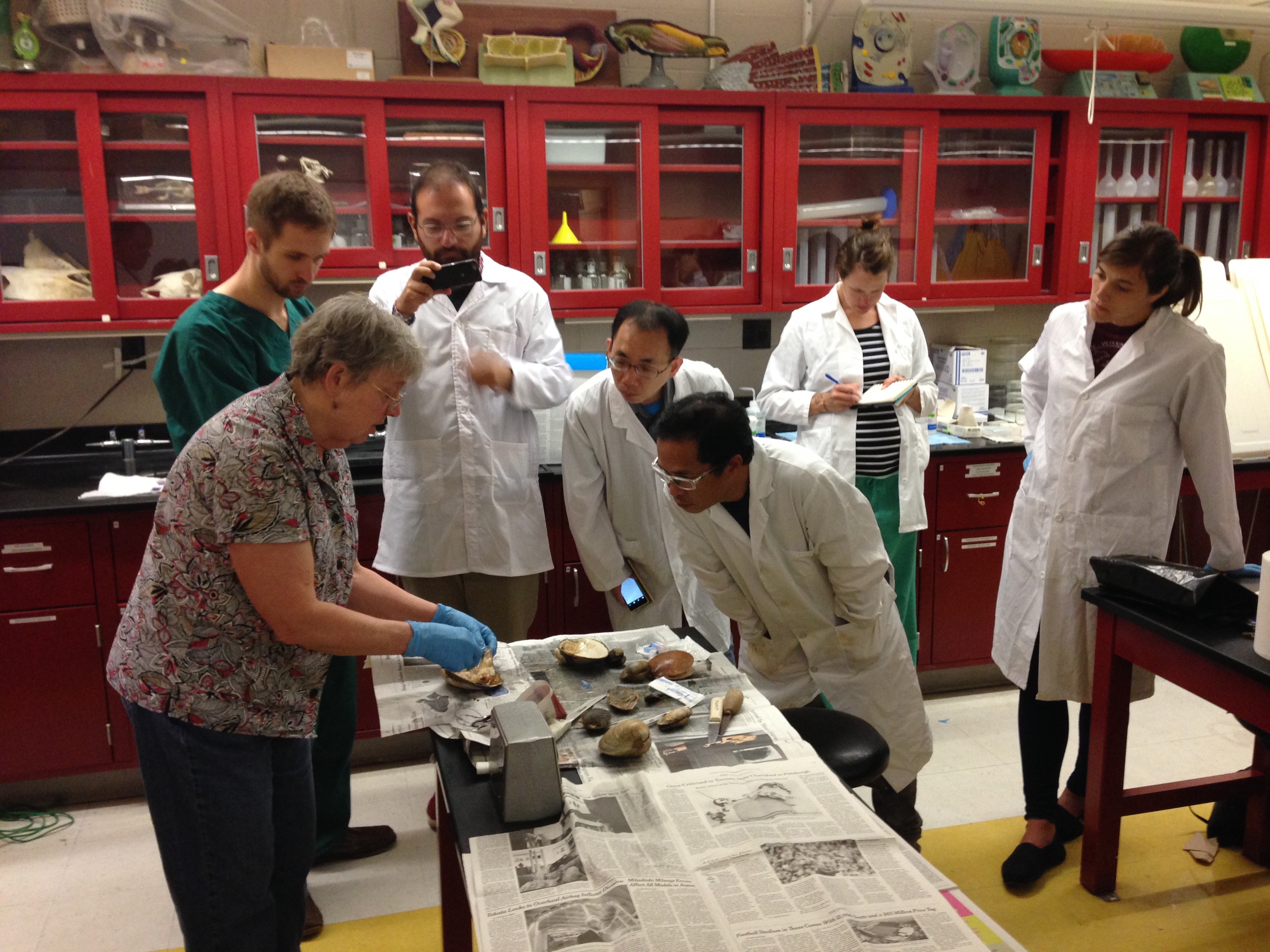AQUAVET® General Information
AQUAVET® was held at the Marine Biological Laboratory (MBL), Woods Hole, Massachusetts from 1977 to 2009. A major renovation project of MBL’s Loeb Building, the primary "home" for the AQUAVET® Program, led the Directors of AQUAVET® to identify new facilities for the presentation of the 2010 Program. In 2010 the AQUAVET® Program was held at the Stony Brook Southampton campus in Southampton, New York on the eastern end of Long Island. The Southampton campus was closed by Stony Brook University in 2010 and is not available for 2011. The Directors have found an excellent location to present the 2011 AQUAVET® Program. Roger Williams University, in Bristol Rhode Island will be the hosts for the upcoming summer schedule.
 Members of the veterinary medical profession are increasingly expressing a desire to contribute to the welfare of the inhabitants of the aquatic world. Furthermore, excessive harvesting, ever more significant pollution problems, and disease have had devastating effects on many sea animal populations, once taken for granted. In a protein-hungry world, control and prevention of disease among aquatic animals, especially those cultured for human consumption, is crucial. The biomedical skills used so effectively by veterinarians to deal with disease and increase productivity among terrestrial animals can be applied to aquatic animals as well. But this will be possible only if schools of veterinary medicine develop programs to train students and stimulate research in aquatic animal medicine.
Members of the veterinary medical profession are increasingly expressing a desire to contribute to the welfare of the inhabitants of the aquatic world. Furthermore, excessive harvesting, ever more significant pollution problems, and disease have had devastating effects on many sea animal populations, once taken for granted. In a protein-hungry world, control and prevention of disease among aquatic animals, especially those cultured for human consumption, is crucial. The biomedical skills used so effectively by veterinarians to deal with disease and increase productivity among terrestrial animals can be applied to aquatic animals as well. But this will be possible only if schools of veterinary medicine develop programs to train students and stimulate research in aquatic animal medicine.
One major effort toward accomplishing these goals is AQUAVET® sponsored by the School of Veterinary Medicine at the University of Pennsylvania and the College of Veterinary Medicine at Cornell University, and presented in collaboration with three marine science institutions at Woods Hole, Massachusetts: the Marine Biological Laboratory, the Northeast Fisheries Science Center of the National Marine Fisheries Service, and the Woods Hole Oceanographic Institution.
AQUAVET® began formally in the spring of 1977 as the result of efforts, conducted in the summer of 1976, to identify and bring together persons and institutions sharing the belief that the veterinary profession is in a position to contribute to the well-being of the aquatic environment and its inhabitants, and is poised to carve out an important niche in the burgeoning aquaculture industry, as well. During the formative months, it became clear that many shared this belief and that students in veterinary medicine were eager to learn more about aquatic animals than is offered in the traditional curricula.
The positive responses received in 1976 led to a successful application to the New York Sea Grant Institute for funding to launch AQUAVET® in the spring of 1977. The grant provided the necessary support for a four-week, intensive course, during which the potential of the field of aquatic veterinary medicine was explored with sixteen students from the veterinary schools at Cornell and Pennsylvania. Following the course, which was presented by more than fifty faculty members from eighteen institutions, eight of the students remained with the program for eight weeks of research at the laboratories of several cooperating institutions at Woods Hole and elsewhere in the country.
Drawing from the lessons learned during AQUAVET® '77, the program directors decided to increase the number of students in AQUAVET® '78, and more importantly, to extend the opportunity to participate to students at all schools and colleges of veterinary medicine in the country. In addition, a limited number of openings were made available to persons who had already received the veterinary degree. At that juncture, it was felt that this was the best way to achieve one of the major goals of the program -- to identify, stimulate, and encourage as many potential leaders of this emerging branch of veterinary medicine as possible.
In 1983, the first AQUAVET® II course was offered. Attended by six individuals, most of whom were alumni of AQUAVET® I, the course lasted four weeks and served to augment the introductory course by covering, in greater detail, subjects in mariculture, toxicology, nutrition, and diseases of cultured fish.
In 2010 a new course was created: AQUAVET® III – Clinical Aspects of Captive Aquatic Animal Medicine.The course is designed for veterinary students and veterinarians who have specific interest in working in an aquarium or dolphinarium. The course is presented in three different venues. The first two weeks are focused on all of the animals found in a typical aquarium and is held at the Georgia Aquarium in Atlanta, GA. The next week focuses on endoscopy and surgery of reptiles and fish taking place at the University of Georgia. The final two weeks take place at Dolphinaris in Cancún, México, where students focus on dolphin medicine including learning to take and analyze samples and hands-on learning of dolphin ultrasound and endoscopy.
Over time, AQUAVET® has become well established and accepted within the profession, and many of its alumni are presently pursuing careers in aquatic animal medicine. Today, the goal of AQUAVET® is to provide for the orderly progression of students into positions of leadership, from which the real contributions of the profession can be made to society. The generation and application of new knowledge must be the ultimate mission.


